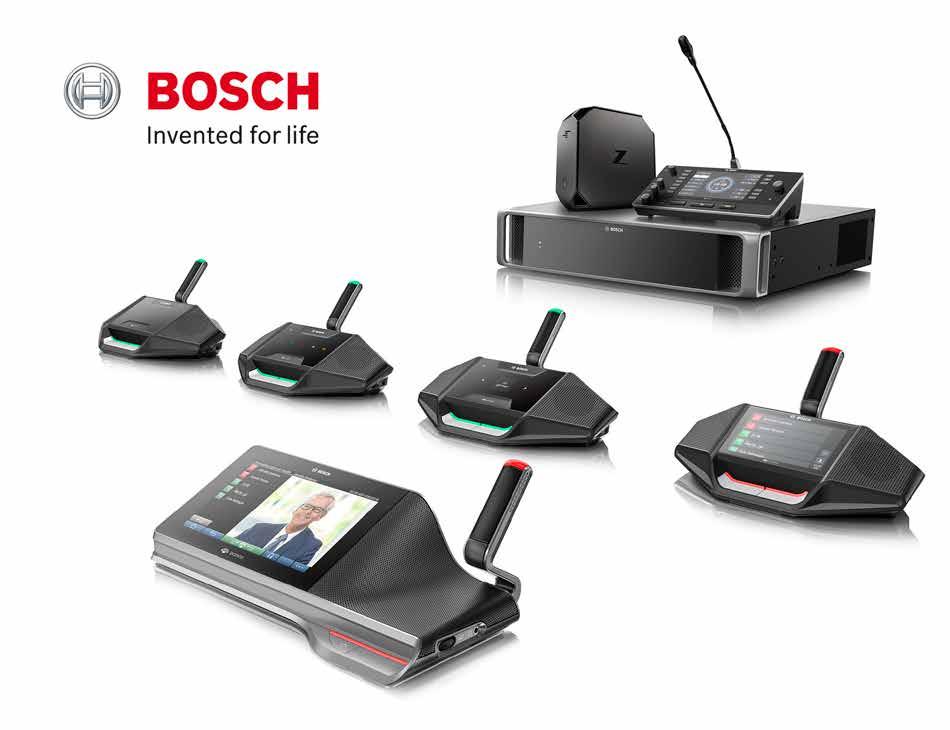
7 minute read
LEVERAGE CYBERSECURITY INNOVATION
Cloud, managed security services, threat intelligence, visual representation of assets, are all poised to move to the next level of engagement and channel partners must be ready, says Maher Jadallah, Regional Director – Middle East, Tenable.
Adoption of cloud services has exploded in recent years, and the trend looks set to continue, as organisations seek flexibility and functionality to accommodate day-to-day working practices.
With pressure to maintain a high level of integrity, coupled with lack of internal skills, there is an opportunity for managed security service providers to step up and ensure organisations can make this migration securely.
The relationship between

cybersecurity and business operations, and between cybersecurity and the business leadership, continues to be an area of evolution.
With security teams stretched, organisations are looking for innovative technology from providers who can offer support, experience and knowledge to keep systems running and data secure.
Channel partners need to be on the lookout for technologies that will help them align with these relationships and deliver on the cybersecurity promise - secure by design.
TECHNOLOGY IS STEPPING-UP Cybersecurity solutions are evolving to help boost the visual representation of an organisation’s attack surface, making it easier for top executives to appreciate the type of vulnerabilities that are distributed across the whole environment. This visual representation includes all forms of assets - whether they are digital or industrial.
Another area that continues to see an overhaul is data intelligence, particularly for the security team. As an illustration, the number of vulnerabilities, threat reports, new malware variants, and more that are being identified daily produce detailed log reports and dashboards that most security teams do not have time to digest. Historically, the vital information about the organisation’s risk posture is captured, but the team is blinded by false positives and theoretical rather than true risk.
Timely then is the final element of this complex puzzle - solutions that offer intelligence to focus the business on what it is doing, and where, for technology adoption is finally being realised.
Alluded to for years, solutions powered by AI and machine learning algorithms are coming to market that can instantaneously digest feeds from thousands of sources. These tools connect all the dots to build a picture of the enterprise to focus in on the business’ critical assets and the actual threat they face, rather than the theoretical risks that may be present.
The final stroke of innovation is the ability to see assets represented, not just by criticality of vulnerability, but also by their possible impact on business as security technologies ingest data feeds from a multitude of solutions. This holistic picture does not just focus on asset types, or where they reside in the enterprise, but considers the criticality of the asset to the business and the actual risks faced.
This intelligence finally allows the business to make informed decisions based on actual data that can demonstrate how effective effort and investment will be aligned to business objectives.
Organisations are looking for guidance and support to capitalise on these cybersecurity innovations.
ARE YOU READY? To be successful, the channel must work hard to develop, foster and maintain strong relationships - both with customers and the vendors within their portfolio.
As a vendor, we look for partners that do more than just sell products.
Maher Jadallah Tenable

We expect to see commitment from channel partners since this is what customers demand. Channel partners need to be ready to invest and leverage cybersecurity innovation, whilst building services and value around complementary technologies, to move to the next level of engagement expected by their customers.
The truth remains - people buy from people and those that forget to put the customer’s needs first will find 2020 challenging.
Up to 3 years of ink included in the box. 2

Get yours today! Call: 04-3880848
© Copyright 2020 HP Development Company, L.P. The information contained herein is subject to change without notice. 1 Based on IDC Worldwide Quarterly Hardcopy Peripherals Tracker®, 2018 Q4 for shipments of all printing devices (inkjet printers, laser printers, copiers and multifunction devices, including production units). 2 Based up on 200 pages per month usage. Actual yield varies considerably based on content of printed pages and other factors. Average based on ISO/IEC 24711 or HP testing methodology and continuous printing. Some ink from included bottles is used to start up the printer. For details see hp.com/go/learnaboutsupplies. HP ink bottles compared to HP ink cartridges. Cost per page based on expected black and composite (cyan/magenta/yellow) page yield results based on HP methodology and continuous printing of ISO/IEC 24712 test pages. Not based on ISO/IEC 24711 test process. Actual yield varies based on content of printed pages and other factors. Some ink from included bottles is used to start up the printer. For more information about fill and yield, see hp.com/go/learnaboutsupplies.
SMJ Solutions LLC, P.O. Box: 116223, Al Zarooni Building, G Floor, Khalid Bin Al Waleed Street, Bur Dubai, UAE
Securing connectivity from unmanaged desktops
Marcus Whittington, co-founder and COO, Sentrybay and Abhijit Mahadik, director – Cybersecurity Solutions, Raqmiyat, discuss the risks of enabling remote access from unmanaged devices and how Sentrybay’s solutions can help enterprises stay secure.
With the outbreak of COVID-19, there are widespread extended requirements for staff to work from home. The phrase “work-from-home” brings-in fears on data security and data-pilferage risks from unmanaged end-user owned remote desktops, PCs and laptops that would be used as endpoints by staff and external vendors, partners and contractors.
Remote access from unmanaged devices introduces elevated risks. Often these devices have a lower security posture, possibly out-of-date anti-virus or internet security software; they offer a higher risk of compromise because they might be running counterfeit or unlicensed solutions, or they are on untrusted networks. The enterprises have little or no control over what software is running or has previously been executed on the devices.
These unmanaged devices pose a higher risk of sensitive data being stolen (including corporate credentials) from attacks involving keylogging, which along with spyware is ranked the highest global malware, according to the NTT Security Threat Intelligence report. Other attacks to be wary of include screen-capture, screen-grabbing, man-in-the-browser, saved account detail harvesting, screen-mirroring, man-in-the-middle, DLL injection and RDP double-hop. During the coronavirus crisis, the risk is exponentially much higher.
VPN is the commonly utilised form of connectivity to ensure that remote devices can connect to corporate networks. However, VPN does not protect the user from malware that records the keystrokes entered or
Marcus Whittington, Sentrybay

takes pictures or videos of the user’s endpoint in order to steal data. They scrape up passwords, credit card and banking information, personal details, and more, to use in identity theft and other malicious deeds. Every piece of data entered into applications such as Word, Excel, Outlook, other Office apps, corporate apps, browser, webmail and SaaS applications by the home-based employee, contractor or supplier such as, can be lifted from the endpoint itself by malware. This can then be sent out to the command and control server of the cybercriminal. In summary, all this data can be stolen by cybercriminals even before it enters the VPN tunnel.
Ideally, with virtually no time for preparation, customers should look for products that can be deployed quickly (i.e. within 24 hours) and which do not involve specially configured software or hardware – a simple download and install from pre-configured software is the preferred option. This means selecting proven anti-keylogging software that can protect every keystroke into any application and prevent screen-scraping malware from stealing credentials and sensitive corporate data.
Raqmiyat, an authorised reseller of Sentrybay, provides secured work-from-home solutions. “During this challenging time, organizations struggle to provide a secured workfrom-home solution. By partnering with Sentrybay, we are offering this secured solution to help our customers without sacrificing their security posture,” says Abhijit Mahadik, director – Cybersecurity Solutions, Raqmiyat.
Unlike other cybersecurity vendors who only worry about cleaning and protecting endpoints, SentryBay cares about data security and uses patented technology of anti-keyloggers and antiscreen captures to achieve this.
Armoured Browser from SentryBay provides a browser on Mac & Windows, which offers a very unique secured browser that provides anti-key logging, anti-screen capture and anti-screen scrap features, thus, enabling a secured browsing environment for sensitive work to be done irrespective these malwares on the PCs.
The best part of this offering is that it creates separate user and desktop sessions and leaves no-trace upon closing. With the latest enhancements, it can be installed as a pseudo-remote access solution to lock down use of, say, Office365, SaaS apps, web browsing and more. It can also be deployed for Citrix, Vmware or any other remote access solution deployed.
“We have experienced a huge surge in demand worldwide, especially in the UAE for this niche solution from Sentrybay. Some of our largest banking clients have added licenses in the past week, specifically to enable more employees to work from home,” says Marcus Whittington, co-founder and COO, Sentrybay.






